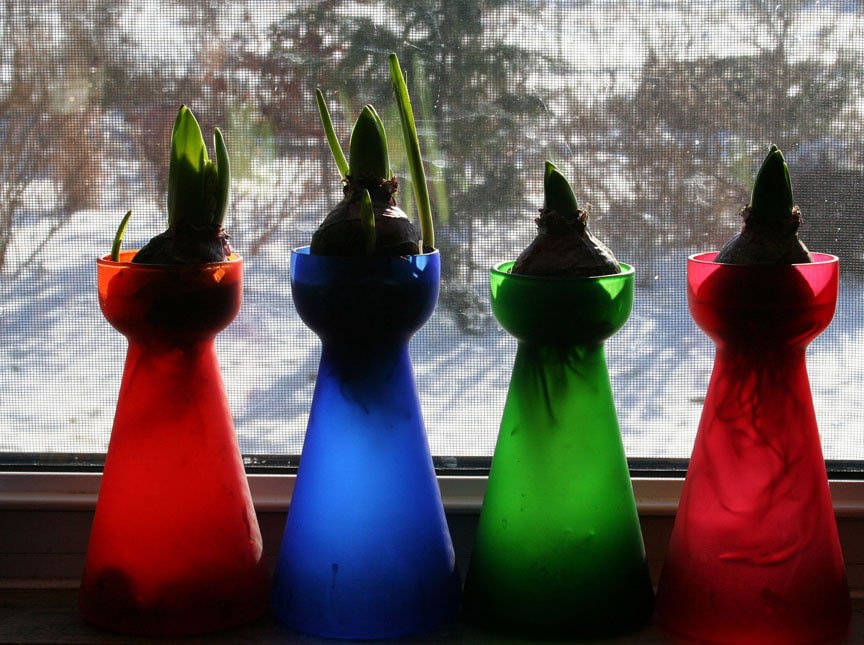
Did you get all your bulbs planted this autumn before the weather turned cold? If you didn’t, don’t panic — I have been known to plant bulbs in a mild spell on Christmas Eve and on New Year’s Day, although this year I managed to get all of mine planted by mid-November — almost unheard of! If you don’t expect to see mild weather or bare ground before spring, and still have some bulbs to plant, try growing them in containers indoors and force them for midwinter blooms.
To force bulbs indoors, you’ll need fresh potting soil, containers with drainage holes and a cool place for chilling. Don’t let the bulbs touch when planting and leave the bulb tips showing above soil level. Water the containers well so that the soil is moist, but not soggy.
Once you’ve planted your bulbs, place the pots in a consistently cool location for the required number of weeks (see chart below). An old refrigerator, a cellar or unheated garage can work well, provided the temperature is above freezing and below 7° to 10°C. Check them weekly to make sure they don’t dry out, but don’t overwater. Remember not to plant or store bulbs near fruit such as apples. Ripening fruit gives off ethylene gas, which is harmless to humans and most plants, but will kill the flower embryo in bulbs.
It can take as little as six to eight weeks of cold treatment for small bulbs and as long as 16 weeks for narcissus and tulips. Usually, when enough weeks have passed, green shoots start to sprout from the bulbs. This is the time to move the pots into a bright location in your house. It will still take several weeks for the plants to flower, and you’ll find they’ll last longer if you don’t put them in a warm spot, such as near a wood stove or fireplace.
Avoid choosing tall, large-flowered tulip varieties unless you have a large, deep pot to support the bulbs and their heavy stems and flowers. Tulips forced indoors will often get lanky, floppy stems from inadequate light, but species tulips, such as Tulipa greigii and T. humilis, work well. They have smaller flowers than the fancier varieties, but are compact and hardy.
Some types of bulbs can be forced using only water. Hyacinths are often set into specially designed glass vases that support the bulb and leave only their roots in water. You can also plant crocus or daffodils without soil by setting them in clear glass dishes on a bed of pea gravel, marbles or polished glass stones. Keep the water level just below the base of the bulbs.
When blooms are finished, some people transplant forced bulbs into their garden, finding they bloom the next year. However, I tend to treat mine as I do poinsettias: something to be enjoyed for the season, and then consigned to the compost heap when the flowers are spent.
Chilling time required for forcing bulbs
- Crocus: 10 weeks
- Grape hyacinths: 16 weeks
- Hyacinth: 12-15 weeks
- Iris reticulata and other dwarf species: 6-8 weeks
- Scilla: 8-10 weeks
- Narcissus and paperwhites: 12-16 weeks
- Tulips: 12-16 weeks
